Here you will find an overview of the VTS peripheral devices (hardware) that are required to perform certain tests. These include, for example, special input devices, but also the VTS dongle, which can be used for licensing the VTS. Please also note the operating instructions (see below).
Operating instructions, safety and maintenance
Here you will find information on operating and maintaining the peripheral devices.
Warnings
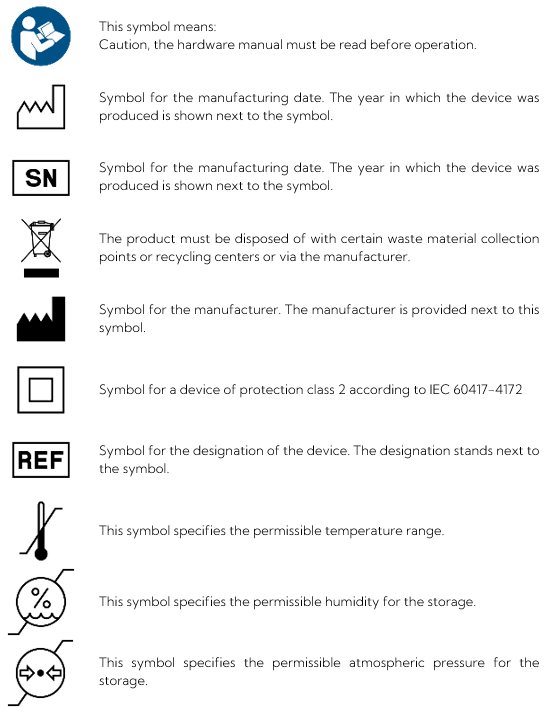
Maintenance of the devices
All VTS devices are maintenance-free. However, it is recommended to check their proper functioning using the Vienna Test System hardware test every six months.
Maintenance, repairs, and modifications must be carried out in accordance with currently effective legal regulations (e. g. Electrical Engineering Act).
Alterations and repairs carried out by unauthorized individuals or companies invalidate the manufacturer’s warranty and product liability.
The devices must always be switched off before cleaning. Use only disinfectants, or mild detergents, to clean the equipment with a soft cleaning cloth. Avoid applying cleaning or disinfecting agents directly to the unit and its parts to prevent liquid from penetrating the enclosure.
Surface disinfectants are generally suitable for cleaning or disinfecting the devices. If the devices are used in healthcare facilities, only disinfectants approved for medical devices in accordance with the Medical Devices Act and Directive 93/42/EEC should be used. Permitted are alcohol-based (ethanol) or active oxygen-based liquids that do not contain solvents and are non-abrasive. (e.g. Schülke mikrozid AF liquid or ANTISEPTICA Descogen Liquid r.f.u.).
Wait a few minutes after cleaning the devices before using them again. This allows any remaining cleaning or disinfectant residues to evaporate.
The product life provided by the manufacturer is 10 years from the date of manufacture. This date can be found on the nameplate.
Packaging and transport
The packaging is reusable and should be kept for possible transport. We recommend the same conditions for transport as for storage. The foam contained in the packaging is made of pure PE and is CFC-free.
Safety
Although the devices are not classified as medical devices, they have been developed in accordance with the requirements of the ÖVE standard EN 60601. They only comply with these regulations when connected to a computer system that also complies with these regulations.
Route the connecting cables in a way that prevents the devices from being accidentally pulled or knocked over. The cables should be kept out of the test taker’s reach, while ensuring there is enough length for each person to place the devices in a comfortable and accessible position.
When using headphones, ensure that the volume is not set to maximum before the test taker puts them on to prevent potential hearing damage.
Do not use any peripheral device if any parts are damaged or broken. The USB peripheral devices of the VTS must not be used in damp environments or in areas with a risk of explosion.
EMC notes
If the input and output devices of the Vienna Test System are used in a clinical environment, special precautions regarding EMC must be taken. Even in the non-medical environment, special care must be taken with regard to EMC. To ensure safe operation, the use of portable and mobile HF communication systems is prohibited, because they could interfere with the functioning of the system.
ESD notes
All input devices incorporate all precautions against electrostatic discharge necessary to prevent damage to components. The excess energy is discharged to earth by means of protective diodes. If the input device crashes, the points in the chapter Hardware Test and troubleshooting must be carried out. If the device failed during a test, the test must be repeated. ESD discharges can be caused by friction between rubber soles and plastic or carpeted floors. Particular caution is required when touching electrically conductive elements.
The chapter Guidelines and manufacturer's declaration for EMC-compliant installation in healthcare facilities discusses EMC-compliant repair and the applicable guidelines in more detail.
Exclusion of liability
The manufacturer or supplier can only be held responsible for matters affecting safety or performance of the device if
-
assembly, upgrades, re-setting, alterations or repairs are carried out by persons authorized by him and
-
the electrical installation at the place of use conforms to IEC or ÖVE EN 7 regulations and
-
the devices are used in accordance with the instructions, and are not used at the same time as USB peripheral devices of other manufacturers.
Guidelines and manufacturer's declaration for EMC-compliant installation in healthcare facilities
Table 1: Electromagnetic emissions
The Panel is intended for operation in the environment specified below. The customer or user of the Panel should ensure that it is operated in such an environment.
|
Emissions test |
Compliance |
Electromagnetic environment - guidelines |
|---|---|---|
|
RF emissions CISPR 11 |
Group 1 |
The Panel uses RF energy only for its internal function. Therefore, its RF emissions are very low and are not likely to cause any interference in nearby electronic equipment. |
|
RF emissions CISPR 11 |
Class B |
The Panel is suitable for use in all establishments, including domestic establishments and those directly connected to the public low-voltage power supply network that supplies buildings used for domestic purposes. |
|
Harmonic emissions IEC 61000-3-2 |
Not applicable |
|
|
Voltage changes and flicker IEC 61000-3-3 |
Not applicable |
Table 2: Electromagnetic immunity
The Panel is intended for operation in the electromagnetic environment specified below. The customer or user of the Panel should ensure that it is used in such an environment.
|
Immunity test |
IEC 60601 test level |
Compliance level |
Electromagnetic environment - guideline |
|---|---|---|---|
|
Electrostatic discharge (ESD) according to IEC 61000-4-2 |
± 6 kV contact discharge
|
± 6 kV contact discharge
|
Floors should be wood, concrete or ceramic tile. If floors are covered with synthetic material, the relative humidity should be at least 30 %. |
|
Electrical fast transient/burst IEC 61000-4-4 |
± 2 kV for power supply lines
|
Not applicable |
The quality of the supply voltage should correspond to that of a typical business or hospital environment. |
|
Surge voltages according to IEC 61000-4-5 |
± 1 kV differential mode voltage
|
Not applicable |
The quality of the supply voltage should correspond to that of a typical business or hospital environment. |
|
Voltage dips, short interruptions and voltage variations on power supply input lines IEC 61000-4-11
|
< 5 % UT (> 95 % dip in UT) for ½ cycle 40 % UT (60 % dip in UT) for 5 cycles 70 % UT (30 % dip in UT) for 25 cycles < 5 % UT (> 95 % dip in UT) for 5 s |
Not applicable |
The quality of the supply voltage should be equivalent to that of a typical business or hospital environment. If the user of the Panel requires continued operation even in the event of power supply interruptions, it is recommended that the Panel be powered from an uninterruptible power supply or a battery. |
|
Magnetic field at supply frequency (50 Hz/60 Hz) according to IEC 61000-4-8 |
3 A/m |
3 A/m |
Magnetic fields at mains frequency should be typical of those found in commercial and hospital environments. |
Note: UT is the mains AC voltage before the test levels are applied.
Table 3: Electromagnetic immunity
The Panel is intended for operation in the electromagnetic environment specified below. The customer or user of the Panel should ensure that it is used in such an environment.
|
Immunity tests |
IEC 60601 test level |
Compliance level |
Electromagnetic environment - guidelines |
|---|---|---|---|
|
|
|
|
Portable and mobile radio equipment shall be used at a distance from the Ag/Ug panel, including the cables, not less than the recommended safety distance calculated according to the equation appropriate for the transmission frequency. Recommended safety distance: |
|
Conducted RF disturbances according to IEC 61000-4-6 |
3 Veff
|
3 → V1 in V |
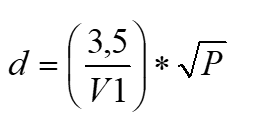
|
|
Radiated RF disturbances according to IEC 61000-4-3 |
3 V/m
|
3 → E1 in V/m |
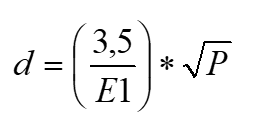
|
|
|
|
|
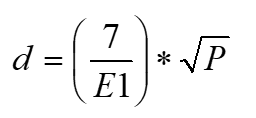
|
|
|
|
|
where P is the maximum rated power of the transmitter in watts (W) according to the transmitter manufacturer and d is the recommended safety distance in meters (m). The field strength of stationary radio transmitters should be less than the compliance level at all frequencies according to an on-site investigationa.b Interference may occur in the vicinity of devices bearing the following symbol: 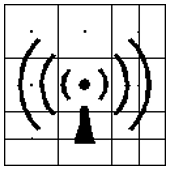
|
Note 1: At 80 MHz and 800 MHz, the higher frequency range applies.
Note 2: These guidelines may not be applicable in all cases. The propagation of electromagnetic fields is influenced by absorption and reflection from buildings, objects, and people.
a The field strength of stationary transmitters, such as base stations for mobile telephones and mobile land radio services, amateur stations, AM and FM radio and television transmitters, cannot be accurately predicted in theory. In order to determine the electromagnetic environment resulting from stationary RF transmitters, an investigation of the location is recommended. If the determined field strength at the location of the Panel Ag/Ug exceeds the above-mentioned compliance level, the Panel Ag/Ug must be observed with regard to its normal operation at each location of use. If unusual performance characteristics are observed, it may be necessary to take additional measures, such as changing the orientation or location of the Panel Ag/Ug.
b Over the frequency range from 150 kHz to 80 MHz, the field strength should be less than [V1] V/m.
Table 4: Recommended safety distances
Recommended separation distances between portable and mobile RF telecommunications equipment and the Panel Ag/Ug.
The Panel Ag/Ug is intended for operation in an electromagnetic environment in which RF disturbance levels are controlled. The user of the Ag/Ug panel can help to avoid electromagnetic interference by maintaining the minimum distance between portable and mobile RF telecommunications equipment (transmitters) and the Ag/Ug panel, depending on the output power of the telecommunications equipment, as specified below.
The protective distance depends on the transmission frequency in m
|
Nominal power of the transmitter W |
150 kHz to 80 MHz 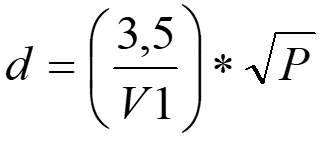
|
80 MHz to 800 MHz 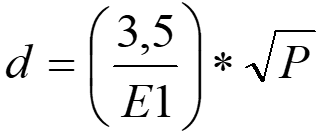
|
800 MHz to 2,5 GHz 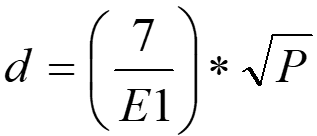
|
|---|---|---|---|
|
0.01 |
0.12 |
0.12 |
0.23 |
|
0.1 |
0.37 |
0.37 |
0.74 |
|
1 |
1.17 |
1.17 |
2.33 |
|
10 |
3.69 |
3.69 |
7.38 |
|
100 |
11.67 |
11.67 |
23.33 |
For transmitters whose maximum rated power is not specified in the above table, the separation can be determined using the equation corresponding to the relevant column, where P is the maximum rated power of the transmitter in watts (W) as specified by the transmitter manufacturer.
Note 1: At 80 MHz and 800 MHz, the higher frequency range applies.
Note 2: These guidelines may not be applicable in all cases. The propagation of electromagnetic fields is affected by absorption and reflection from buildings, objects, and people.